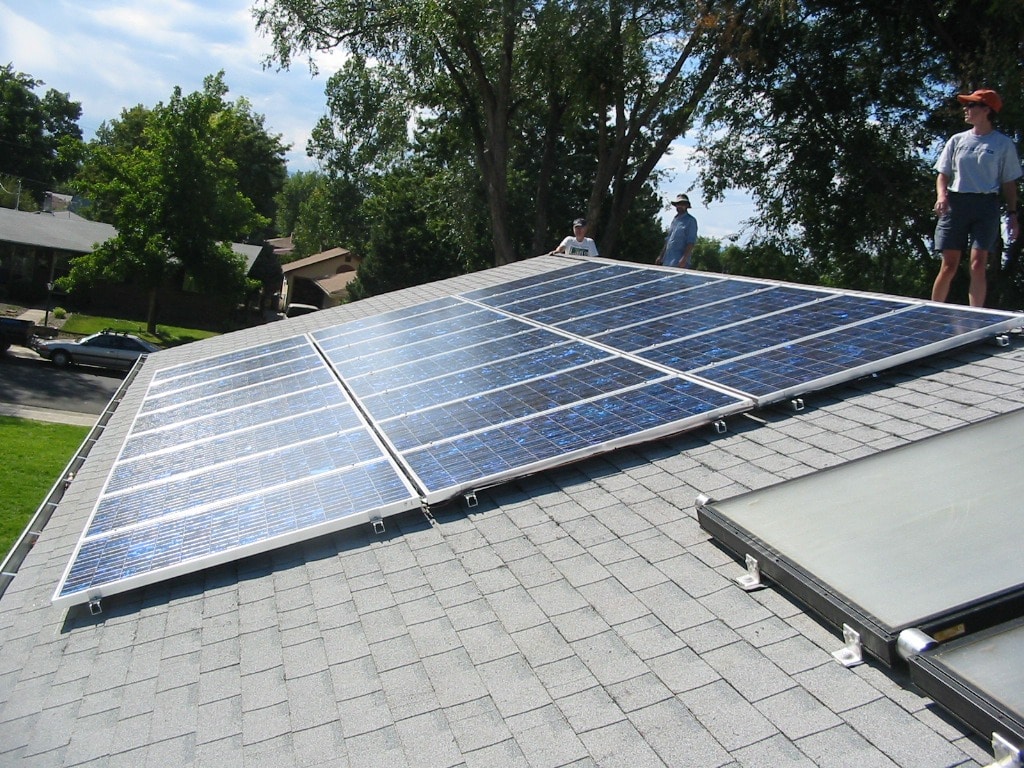The rooftop solar industry is no stranger to ups and downs, often referred to as the “solar coaster.” Despite these oscillations, the long-term story is that of growth.
In 2023, that growth continued, though more modestly than some years past. Wood Mackenzie reported a 24% growth in installations through the first three quarters of 2023. Supply chain constraints of 2022 eased, and California had a big surge in installations from customers looking to secure legacy NEM 2.0 rates. Below are four rooftop solar trends that pv magazine USA reported this year.
High interest rates
The US Federal Reserve raised interest rates to highs not seen in many years in an attempt to stamp down sharply rising inflation. This was a particular challenge to rooftop solar, as many companies rely on loans to provide solar equipment to their customers.
High interest rates put pressure on solar financiers to either raise interest rates on loans or assess upfront dealer fees. In both cases, these changes squeezed the value offered to customers, leading to a tough year for solar company stock valuations and a slowdown in installations.
High utility rates
Though financing a solar project has gotten more expensive, so too have utility rates, placing another factor in the “why you should go solar” bucket. In California, electricity rates have exploded over the past three years, far outpacing inflation. Another 13% utility rate hike is pegged for California in 2024.
This has led to a shift in thinking about the benefit of solar plus storage. While customers often focus on payback periods or return on investment (ROI), this can be exceedingly difficult to calculate under shifting assumptions of utility electric rates.
Instead, solar installers are focusing the discussion on solar plus batteries being a hedge against unpredictable electricity rates, which have continued to rise sharply nationwide. While solar and storage shoppers typically use a rule of thumb of about 3% to 4% annual rate increases from the utility company to estimate long-term savings, double-digit rate hikes are common now. Where will your electric rate be in 25 years?
Policy blunders
There have been numerous policy changes across the US, many of which have cut the value of net metering, or the process by which solar customers export excess solar generation to the grid in exchange for credits.
Net metering has been critical in launching US rooftop solar, and while net metered solar rates need to account for the utility’s cost to operate transmission lines, solar advocates argue that cuts to net metered rates went down far too much, far too fast.
Popular content
This prime example of this is in California, where the sudden slash of about 80% of net metering value led to an 80% drop in installations in the following months. The California Solar and Storage Association (CALSSA) said over 17,000 jobs have been lost as a result.
Virtual power plants
Rooftop solar is evolving. In many markets across the US, with net metering being actively being phased out, standalone solar arrays cannot capture the same value as they had in the past.
Home battery energy storage systems are increasingly being attached with rooftop solar to ensure homeowners can store and consume their locally produced clean energy, avoiding peak demand charges that occur in the afternoon.
However, solar-plus-battery systems can do more than just store and self-consume power in a day-to-night cycle. These distributed energy resources can work in concert, along with HVAC systems and home appliances, to smooth out demand across the grid, creating more stability in electricity markets, and eliminating the supply and demand imbalance phenomenon known as the “duck curve.”
Programs that coordinate these distributed resources are often referred to as virtual power plants (VPP). By participating in a VPP, rooftop solar and battery customers can leverage their resources and get paid by a VPP administrator.
In California, customers are paid up to $100 to $250 annually for enrolling their batteries in PG&E demand response programs. In Long Island, New York, PSEG customers are paid up to $6,250 upfront for enabling their battery to be leveraged by the utility during ten peak demand events throughout the year.
Looking ahead
In 2024, some of the heavy headwinds like high interest rates are expected to partially subside. Manufacturers and distributors will attempt to clear out excess channel inventories created by the dip in demand.
“I feel that 2024 will be a year of recovery,” said Raghu Belur, co-founder and chief of products at Enphase Energy in an interview with pv magazine USA. “I don’t see the market getting worse, but I don’t see it getting dramatically better. We won’t be back to the 2022-type growth. That will probably take an extra year. But 2024 you see things starting to turn around and slowly recover.”
This content is protected by copyright and may not be reused. If you want to cooperate with us and would like to reuse some of our content, please contact: editors@pv-magazine.com.



The next big “phase” of solar development in California is likely to be driven by REIT developments of solar parking lot canopies +stationary storage +Vehicle-2-Grid chargers at big hot asphalt (sub)urban parking lots located at large apartments & condos, neighborhood shopping centers, office & light industrial business parks, entertainment venues & various public facilities. …..right where most energy is being consumed. No new utility transmission, site acquisition or other site improvement spending required.
This is, without a doubt, the most rapidly exploitable strategy to accelerate widely distributed EV charging infrastructure & NetZero commercial properties, while simultaneously constructing a matrix of reliable neighborhood micro grids. And it can be accomplished by typical leased commercial property investors using IRA investment incentives, with just ordinary local building permits & no NIMBY opposition.